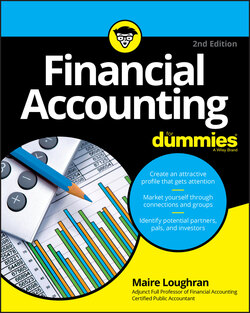Читать книгу Financial Accounting For Dummies - Maire Loughran - Страница 13
Preparing financial statements
ОглавлениеIf you’re taking a financial accounting class, your entire course is centered on the proper preparation of financial statements: the income statement, balance sheet, and statement of cash flows. Financial accountants can’t just stick accounting transaction data on the statements wherever they feel like. Many, many rules exist that dictate how financial accountants must organize the information on the statements; these rules are called generally accepted accounting principles (GAAP), and I discuss them in Chapter 4. The rules pertain to both how the financial accountant shows the accounting transactions and on which financial statements the information relating to the transactions appears.
Curious about the purpose of each financial statement? (I know the mystery is eating at you!) Here’s the scoop on each:
Income statement: This financial statement shows the results of business operations consisting of revenue, expenses, gains, and losses. The end product is net income or net loss. I talk about the income statement in Chapter 2, and then I cover it from soup to nuts in Chapter 10. For now (because I know the excitement is too much for you!), here are the basic facts on the four different income statement components:Revenue: Gross receipts earned by the company selling its goods or services.Expenses: The costs to the company to earn the revenue.Gains: Income from non-operating-related transactions, such as selling a company asset.Losses: The flip side of gains, such as losing money when selling the company car. A lot of non-accountants call the income statement a statement of profit or loss or simply a P&L. These terms are fine to use because they address the spirit of the statement.
Balance sheet: This statement has three sections: assets, liabilities, and equity. Standing on their own, these sections contain valuable information about a company. However, a user has to see all three interacting together on the balance sheet to form an opinion approaching reliability about the company.Part 3 of this book is all about the balance sheet, but for now here are the basics about each balance sheet component:Assets: Resources owned by a company, such as cash, equipment, and buildings.Liabilities: Debt the business incurs for operating and expansion purposes.Equity: The amount of ownership left in the business after deducting total liabilities from total assets.
Statement of cash flows: This statement contains certain components of both the income statement and the balance sheet. The purpose of the statement of cash flows is to show cash sources and uses during a specific period of time — in other words, how a company brings in cash and for what costs the cash goes back out the door.
